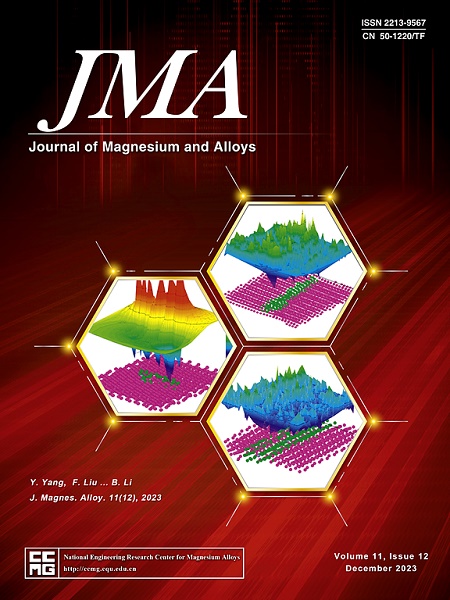Mg-Zn-Mn alloys degradation in pancreatic fluid: Trypsin disrupts passivation for stent design
IF 13.8
1区 材料科学
Q1 METALLURGY & METALLURGICAL ENGINEERING
引用次数: 0
Abstract
Biodegradable magnesium alloys show promising potential for pancreatic duct stents, yet their degradation varies significantly across physiological environments. This study compared the corrosion rates of extruded Mg-2Zn-xMn (x = 0, 0.5, 1.0, 1.5 wt. %) alloys in human pancreatic fluid. The results revealed that the alloys undergo different corrosion mechanisms in human pancreatic fluid, emphasizing the necessity of conducting evaluations under physiologically relevant conditions. Further investigations into the degradation mechanism in pancreatic fluid indicated that the alkaline pH (8.3–8.7), high bicarbonate concentration, and enzymatic activity significantly influence the corrosion process. Electrochemical and immersion tests showed rapid initial corrosion due to Cl⁻ attack, followed by the formation of a protective Mg(OH)₂, MgCO₃, and Ca₃(PO₄)₂ layer that slowed degradation. However, digestive enzymes, particularly trypsin, disrupt passivation by interacting with organic components, leading to pitting and filiform corrosion. Among the investigated alloys, Mg-2Zn-1.0Mn exhibited the most favorable combination of corrosion resistance, mechanical performance, and cytocompatibility. This study highlights the critical impact of pancreatic fluid on magnesium alloy degradation and stresses the need for physiologically accurate evaluations.

Mg-Zn-Mn合金在胰液中的降解:胰蛋白酶破坏支架设计的钝化
可生物降解镁合金在胰管支架中具有广阔的应用前景,但其降解在不同的生理环境下存在显著差异。本研究比较了挤压Mg-2Zn-xMn (x = 0,0.5, 1.0, 1.5 wt. %)合金在人体胰液中的腐蚀速率。结果表明,合金在人体胰液中具有不同的腐蚀机制,强调了在生理相关条件下进行评估的必要性。对胰液中降解机制的进一步研究表明,碱性pH值(8.3-8.7)、高碳酸氢盐浓度和酶活性显著影响腐蚀过程。电化学和浸渍测试表明,由于Cl -毒化,最初的腐蚀速度很快,然后形成保护性的Mg(OH)₂,MgCO₃和Ca₃(PO₄)₂层,减缓了腐蚀。然而,消化酶,特别是胰蛋白酶,通过与有机成分相互作用破坏钝化,导致点蚀和丝状腐蚀。其中,Mg-2Zn-1.0Mn具有较好的耐蚀性、力学性能和细胞相容性。本研究强调了胰液对镁合金降解的重要影响,并强调了生理上准确评估的必要性。
本文章由计算机程序翻译,如有差异,请以英文原文为准。
求助全文
约1分钟内获得全文
求助全文
来源期刊

Journal of Magnesium and Alloys
Engineering-Mechanics of Materials
CiteScore
20.20
自引率
14.80%
发文量
52
审稿时长
59 days
期刊介绍:
The Journal of Magnesium and Alloys serves as a global platform for both theoretical and experimental studies in magnesium science and engineering. It welcomes submissions investigating various scientific and engineering factors impacting the metallurgy, processing, microstructure, properties, and applications of magnesium and alloys. The journal covers all aspects of magnesium and alloy research, including raw materials, alloy casting, extrusion and deformation, corrosion and surface treatment, joining and machining, simulation and modeling, microstructure evolution and mechanical properties, new alloy development, magnesium-based composites, bio-materials and energy materials, applications, and recycling.
 求助内容:
求助内容: 应助结果提醒方式:
应助结果提醒方式:


